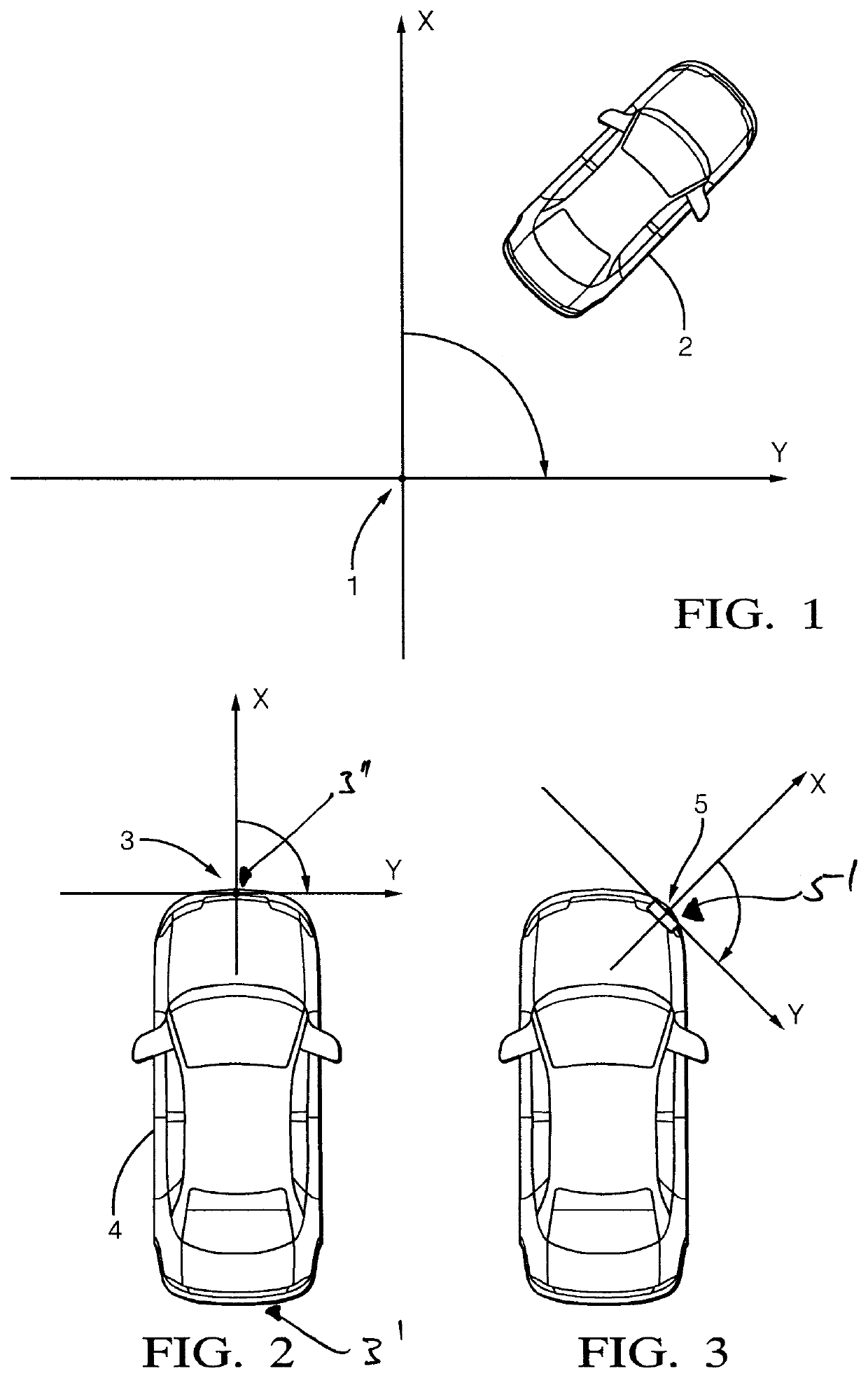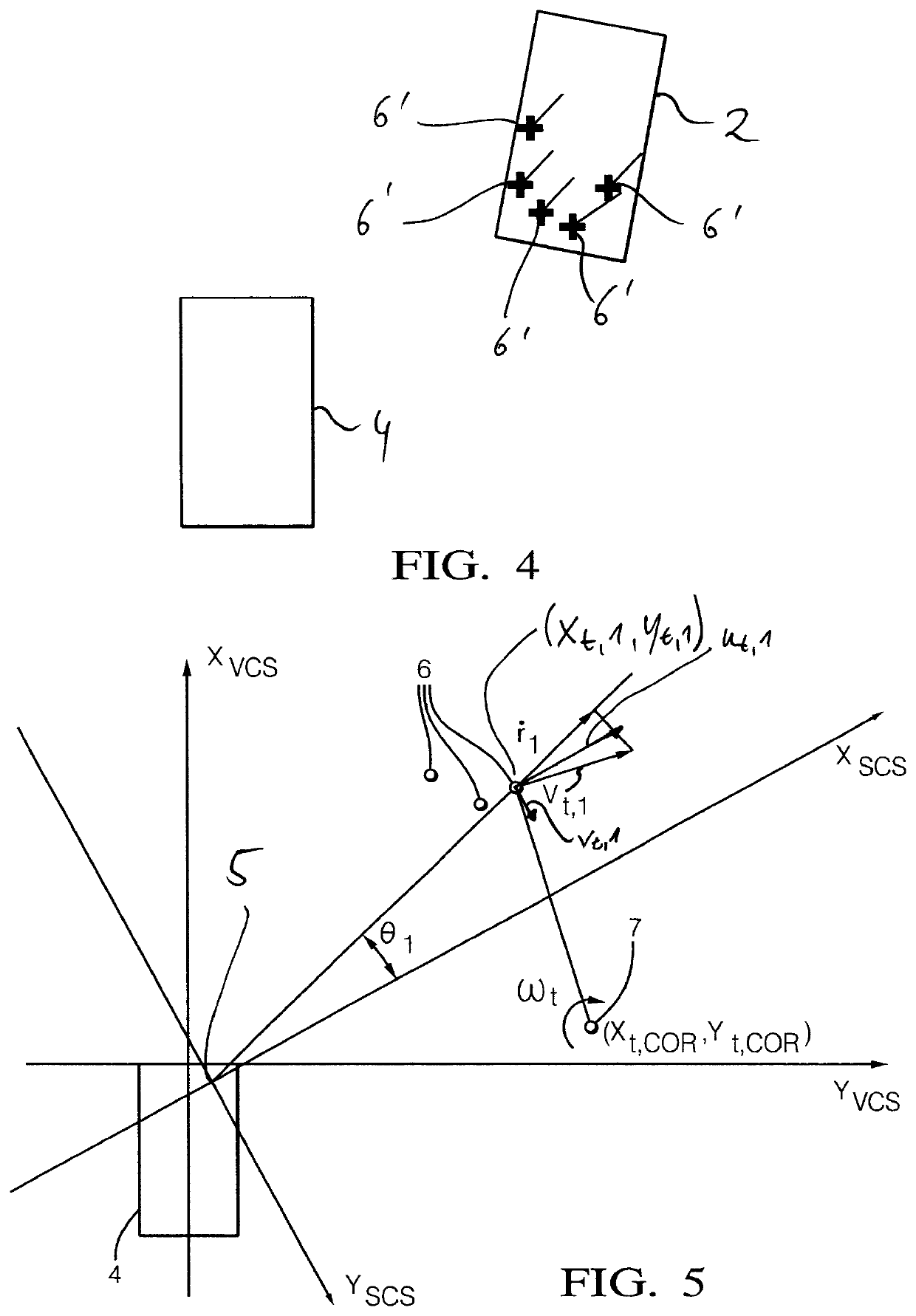Method of determining an uncertainty estimate of an estimated velocity
a technology of uncertainty estimation and estimated velocity, which is applied in the direction of knowledge representation, instruments, and reradiation, can solve the problems of high uncertainty, estimation error, and inability to accurately estimate the velocity of surrounding objects, so as to improve the accuracy of uncertainty estimation and improve the accuracy of uncertainty measur
- Summary
- Abstract
- Description
- Claims
- Application Information
AI Technical Summary
Benefits of technology
Problems solved by technology
Method used
Image
Examples
Embodiment Construction
[0055]Generally, a host vehicle 4 (see FIG. 2) is equipped with a radar system 5′ (see FIG. 2) where reflected radar signals from a target 2 (FIG. 1) in the field of view of the radar system 5′ are processed to provide data in order to ascertain parameters used in the methodology.
[0056]In order to do this various conditions and requirements may be of advantage. The target 2 (rigid body, e.g. vehicle) is preferably an extended target, i.e., the target allows the determination of a plurality of points of reflection 6′ (see FIG. 4) that are reflected from the target 2 in real-time and that are based on raw radar detection measurements.
[0057]The target 2 is an example of an object in the sense of the general part of the description and the claims. However, other types of objects are also possible, in particular objects that appear in ordinary traffic scenes, like motorcycles, bicycles, pedestrians, large as well as small vehicles. Moreover, in principal objects can also be stationary ob...
PUM
 Login to View More
Login to View More Abstract
Description
Claims
Application Information
 Login to View More
Login to View More - R&D
- Intellectual Property
- Life Sciences
- Materials
- Tech Scout
- Unparalleled Data Quality
- Higher Quality Content
- 60% Fewer Hallucinations
Browse by: Latest US Patents, China's latest patents, Technical Efficacy Thesaurus, Application Domain, Technology Topic, Popular Technical Reports.
© 2025 PatSnap. All rights reserved.Legal|Privacy policy|Modern Slavery Act Transparency Statement|Sitemap|About US| Contact US: help@patsnap.com



